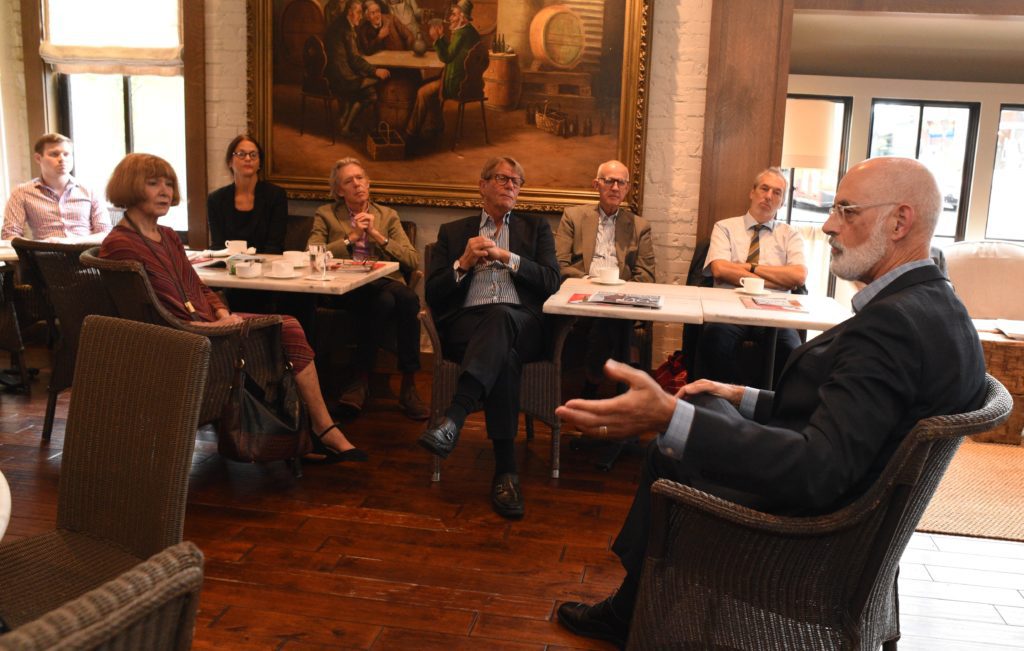George Hemphill on Selling Art in D.C.
By • October 11, 2018 0 2152

Hemphill Fine Arts is 25 years old. At Georgetown Media Group’s Oct. 11 Cultural Leadership Breakfast at the George Town Club, George Hemphill looked back to 2004, when the gallery relocated to the 14th Street corridor; to 1993, when it opened at 1027 33rd St. NW in Georgetown; and to April Fool’s Day 1979, when he arrived from Atlanta to work at Middendorf Gallery.
In 1979, an “effervescent redneck,” he soon became part of the Washington art scene, meeting figures such as Walter Hopps, the former Corcoran Gallery of Art director who was then curator of contemporary art at what became the Smithsonian American Art Museum. The art market was about to take off, and “I rode that wave,” Hemphill said.
The market for photography at the time had “more of a Wild West quality,” he recalled. Middendorf Gallery began representing pathbreaking fine-art photographers William Christenberry and William Eggleston. Hemphill, who established the gallery’s photography department, also worked on Man Ray and Robert Mapplethorpe shows and “recreated” Alfred Stieglitz’s 291 gallery.
But, needing “supplemental income,” he started a business transporting art that “put me in the back room of almost every major gallery” — witnessing screaming matches between Mary Boone and Julian Schnabel and between Leo Castelli and Ileana Sonnabend, for example.
When the economy turned sour, he took a year off and “rode a bicycle all over Washington,” then took advantage of the real estate downturn to lease space near the C&O Canal for his own gallery in Georgetown, representing about 10 D.C.-based artists.
The move to 1515 14th St. NW came about following a walk down 14th Street with artist-turned-developer Giorgio Furioso, who was looking to buy a building in the then-depressed area. Though other galleries took a chance on the building and the area around 2004, Hemphill credits Studio Theatre, which moved into its renovated complex at 1501 14th St. NW that year — and the P Street Whole Foods, for less than obvious reasons — for the corridor’s revival (which in recent years has pushed some galleries out).
Hemphill Fine Arts has presented more than 200 shows, in the last 10 years broadening its offerings by focusing on the Washington Color School and mid-20th-century African American art. Having spent his teenage years in the South of the 1960s, Hemphill said he feels a personal connection to the civil rights movement and is “frustrated by the overwhelming whiteness in the art world.”
He movingly described the work in the gallery’s current exhibition, Renée Stout’s “When 6 is 9: Visions of a Parallel Universe,” on view through Dec. 15.
Admitting that he had to remind himself to keep his remarks positive, toward the end Hemphill stated a key question: “Why has Washington lost so many galleries since the time I arrived?” Two factors he pointed to were the extremely high real estate prices and a loss of “hometown fidelity” due to e-commerce and because “artists have atomized,” no longer developing distinctive shared styles.

Arts patron Mark Warner, Gertraud Hechl of Bonhams and George Hemphill of Hemphill Fine Arts. Photo by Robert Devaney.

